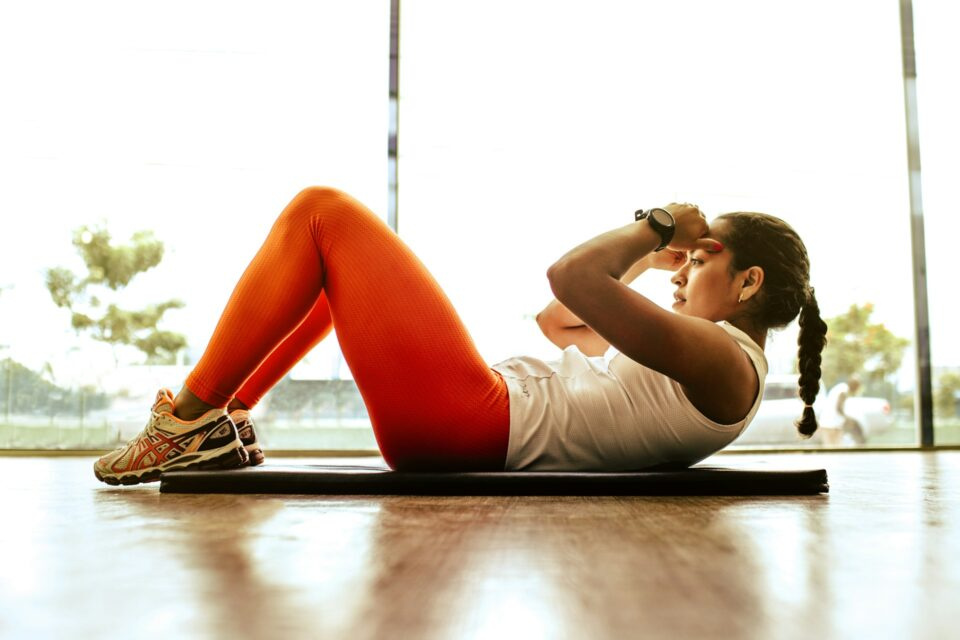
The Ultimate 7-Minute Core Workout for Absolute Beginners
Building a strong core is essential for overall fitness and well-being. The core muscles, including the abs, obliques, and lower back, are the powerhouse of your body. They support good posture, enhance balance, and play a crucial role in preventing injuries. However, starting a core workout routine can feel intimidating, especially for beginners. That’s why a 7-minute core workout tailored to absolute beginners is a perfect starting point. It’s an efficient, equipment-free routine that can be done anywhere, helping you build a solid foundation of strength.
This comprehensive guide is designed to take the guesswork out of core training. We’ll cover the vital benefits of a strong core, walk you through a simple yet effective 7-minute workout, and provide practical tips and modifications to ensure proper form and progress. By following this routine, you’ll be on your way to developing a healthier, more stable core without overcomplicating the process.
The Foundational Benefits of a Strong Core
Before we dive into the exercises, it’s important to understand just how vital core strength is for your everyday life and long-term health. A weak core can be a source of back pain, poor posture, and increased risk of injury.
- Improved Posture: A strong core acts as a natural brace for your spine. It helps you stand taller, sit straighter, and maintain proper alignment, which can significantly reduce the risk of chronic back pain.
- Enhanced Stability and Balance: Your core muscles are the center of gravity for your body. A well-developed core provides a solid foundation for all your movements, from simple acts like walking and bending to more complex ones like running or lifting weights. This stability is key to preventing falls and improving coordination.
- Reduced Risk of Injury: By supporting your spine and pelvis, a strong core can protect you during physical activity. It helps you lift objects with proper form and absorb impact more efficiently, which is crucial for preventing strains, sprains, and other common injuries.
- Functional Fitness: Core strength is not just for athletes. It supports all your everyday tasks, such as bending over to tie your shoes, twisting to grab something from a shelf, or lifting groceries. The stronger your core, the easier these movements become.
- Better Breathing: The diaphragm, a key breathing muscle, is part of your deep core system. By strengthening your core, you can improve your breathing mechanics, which can have a positive impact on everything from athletic performance to stress management.
The 7-Minute Core Workout for Beginners
This workout is designed to be efficient and effective. It consists of 7 beginner-friendly exercises, each performed for 45 seconds, followed by 15 seconds of rest. The entire routine takes just 7 minutes, making it easy to fit into any schedule, whether you do it in the morning or as a quick break during your day.
1. Marching Glute Bridge
- Targets: Glutes, lower back, and abs.
- How to Do It:
- Lie on your back with your knees bent and feet flat on the floor, about hip-width apart.
- Pressing your heels into the floor, lift your hips toward the ceiling to form a straight line from your shoulders to your knees.
- Once stable, slowly march one knee toward your chest, then lower it back down. Alternate legs, keeping your hips steady and lifted throughout the movement.
- Tips: Focus on keeping your hips level and avoiding any sagging. The goal is stability, not height.
2. Bird Dog
- Targets: Lower back, abs, and glutes. This is a fantastic exercise for improving stability and balance.
- How to Do It:
- Start on your hands and knees in a tabletop position, with your back in a neutral, straight line.
- Engage your core and slowly extend your right arm forward and your left leg backward, keeping them parallel to the floor.
- Pause for a moment, then return to the starting position with control. Repeat on the other side, extending your left arm and right leg.
- Tips: Move slowly and deliberately to maintain your balance. Keep your hips and shoulders square to the floor to prevent twisting.
3. Modified Side Plank
- Targets: Obliques (side core muscles) and deep core stabilizers.
- How to Do It:
- Lie on your side with your knees bent and your elbow directly under your shoulder.
- Lift your hips off the floor, forming a straight line from your head to your knees.
- Hold this position for 20-25 seconds before carefully lowering your hips and switching to the other side.
- Tips: Avoid letting your hips sag toward the floor. You should feel the tension in the side of your core.
4. Dead Bug
- Targets: Abs and stabilizers. This is an excellent exercise for improving core control without putting strain on the lower back.
- How to Do It:
- Lie on your back with your arms extended toward the ceiling and your knees bent at a 90-degree angle, with your shins parallel to the floor.
- Slowly lower your right arm and left leg toward the floor, stopping just before they touch the ground.
- Return to the starting position and repeat the movement on the other side, lowering your left arm and right leg.
- Tips: The key is to keep your lower back pressed firmly into the floor. If you feel your back arching, don’t lower your limbs as far.
5. Seated Russian Twists (No Weight)
- Targets: Obliques and rotational core strength.
- How to Do It:
- Sit on the floor with your knees bent and feet flat, leaning back slightly to engage your core.
- Clasp your hands together and, keeping your spine straight, rotate your torso to the right, then back to the center, and then to the left.
- Tips: Avoid rushing the movements. Focus on a controlled twist from your core rather than just swinging your arms. If you want a more beginner-friendly version, keep your feet on the floor.
6. Standing Knee Drives
- Targets: Lower abs and hip flexors. This exercise also improves balance and coordination while standing.
- How to Do It:
- Stand tall with your feet shoulder-width apart, with your hands gently clasped behind your head or at your sides.
- Lift your right knee toward your chest while simultaneously bringing your arms down to meet it (as if you were performing a standing crunch).
- Return to the starting position and switch sides, lifting your left knee.
- Tips: Maintain a steady rhythm and focus on squeezing your abs to drive your knee up.
7. Cat-Cow Stretch
- Targets: Core flexibility and spinal mobility. This is a great exercise to finish your workout, helping to decompress your spine and improve flexibility.
- How to Do It:
- Start on your hands and knees in a tabletop position.
- Inhale as you arch your back, lifting your head and tailbone towards the ceiling (this is the “cow” pose).
- Exhale as you round your back, tucking your chin toward your chest and your pelvis inward (this is the “cat” pose).
- Tips: Move slowly and mindfully, synchronizing your movements with your breath. You should feel a gentle stretch and mobilization of your spine.
How to Get the Most Out of This Workout
To ensure you’re getting the best results and staying safe, keep these key tips in mind:
- Warm Up First: Before you begin, spend 2-3 minutes doing some light cardio like walking in place, jumping jacks, or gentle bodyweight squats to get your blood flowing and prepare your muscles for the workout.
- Focus on Form, Not Speed: Proper technique is paramount. It’s better to perform fewer repetitions with perfect form than to rush through them incorrectly. If you’re unsure, consider watching a video tutorial for each exercise.
- Listen to Your Body: This workout is designed to be challenging but not painful. If an exercise feels too difficult or causes discomfort, modify it or take a quick break. Pushing through pain can lead to injury.
- Stay Consistent: The key to building strength is consistency. Aim to perform this routine 3-4 times per week, with a rest day in between to allow your muscles to recover and grow stronger.
- Progress Gradually: As you get stronger, you can increase the duration of each exercise from 45 to 60 seconds, or try more advanced variations. For example, you can eventually progress from a modified side plank to a full side plank on your feet.
Common Mistakes to Avoid
Even with simple exercises, it’s easy to fall into bad habits. Be mindful of these common mistakes:
- Holding Your Breath: Proper breathing is essential. Inhale and exhale steadily throughout each movement to maintain oxygen flow and reduce tension.
- Rushing Through Movements: Slow, controlled movements lead to better muscle engagement and more effective results. Rushing can lead to poor form and potential injury.
- Neglecting Rest Days: Your muscles don’t grow stronger during the workout; they grow stronger during recovery. Ensure you give your body adequate rest.
- Ignoring Pain: While some muscle soreness (DOMS) is normal, sharp or lingering pain is a sign to stop. Distinguish between muscle fatigue and pain to prevent injury.
Modifications for Absolute Beginners
If you’re brand new to working out, here are some ways to make the exercises even more accessible:
- Knee Drops for Russian Twists: Instead of lifting your feet, keep them on the ground and gently twist your torso from side to side.
- Bent-Leg Bird Dog: Instead of fully extending your leg backward, simply lift it slightly off the ground, keeping your knee bent at a 90-degree angle.
- Shorter Plank Holds: Start with 10-15 second holds for the modified side plank and gradually increase the duration as your core strength improves.
This 7-minute core workout is the perfect introduction to building foundational core strength. It’s beginner-friendly, requires no equipment, and can be done right at home. By consistently incorporating these exercises into your routine, you’ll develop a stronger, healthier core that not only supports your fitness goals but also enhances your daily life by improving posture, stability, and overall well-being. Remember, progress takes time, so be patient, celebrate your achievements along the way, and enjoy the journey to a stronger you.










